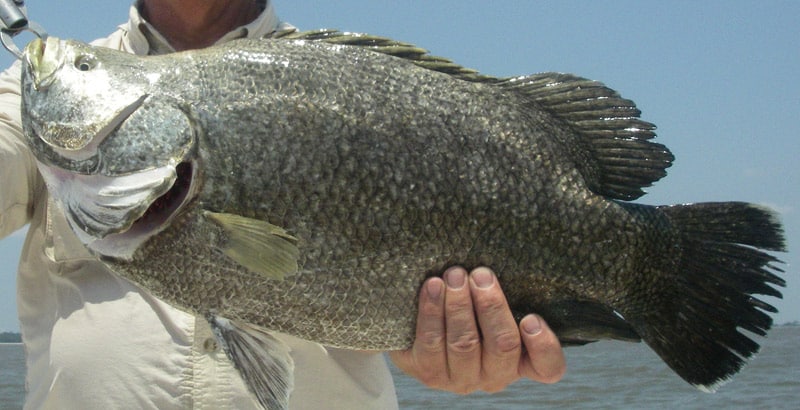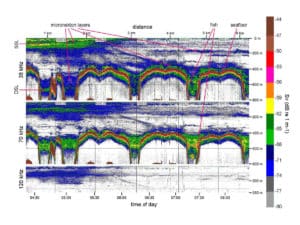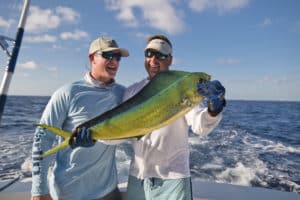
Tagged tripletail off Georgia
The mottled-brown tripletail might lack the flashy allure of a neon mahi or the bullish bulk of a mature red drum, but sightcasting to these peculiar perch-like fish — occasionally referred to as “bream on steroids” — can be addictive.
According to fishbase.org, tripletail swim in all oceans, including U.S. Atlantic Coast waters and those of the Gulf of Mexico. Most anglers associate tripletail with structure such as buoy lines and floating debris and consider them an incidental catch. But each spring, these fish amass in Georgia estuaries and along some beaches — often away from all structure — and periodically appear at the surface.
Fans of sportfishingmag.com and of the magazine have probably seen some of my articles about this** sightcasting phenomenon**. But my interest in tripletail isn’t purely recreational; I’m one of many anglers (including captains) who have helped state fishery biologists as they gather data to understand and manage this species.
Chris Kalinowsky, associate marine biologist for Georgia’s coastal DNR division, has monitored tripletail through a telemetry (acoustic tagging) study in cooperation with Florida biologists since 2009. DNR marine technician Donna McDowell has managed data from a cooperative tagging project begun in 2001 and a graduate research project in 2009-2010.
All data sets have shown evidence of the tripletail’s north-south migration. For instance, a tripletail caught and tagged initially off Jekyll Island, Georgia, in June 2009 was recaptured in February 2010 in the Loxahatchee River north of West Palm Beach, Florida. In addition, that fish grew from a length of 20 inches to 26 inches in that time.
Drawing from the acoustic research, Kalinowsky’s recent summary states that “the first three years of this study have shown that tripletail exhibit strong site fidelity to the sound in which they are tagged.” For instance, not only do tripletail tagged in Ossabaw Sound, Georgia, stay in that area from late March sometimes through mid-November, they also return there after migrating. “We now know that tripletail spend a large amount of time each year within Georgia’s estuaries.”
One fish tagged in 2010 in Ossabaw has literally traveled to Florida and back to Georgia three times. No one reported catching a telemetered fish, so it was either never caught or perhaps caught and released.
Most tripletail leave Georgia in late fall, Kalinowsky says, and are detected on acoustic receivers in mid-Florida (the Cape Canaveral area) from mid-October to early November and in south Florida (Jupiter Inlet, Loxahatchee River, Indian River) in early December. The tripletail move back north along the Florida coast, staging up around Canaveral from January to March, before pushing up into Georgia waters, “possibly to spawn,” the summary states.
However, the graduate research, conducted in 2009-2010 by University of Georgia student Russell Parr, revealed that the female tripletail collected from Georgia waters April through July showed no imminent spawning characteristics. Whether they spawn at other times in inshore or offshore Georgia waters will take more study, but tagging has offered the first clues to understanding this unusual game fish.
Anglers who want to participate in tripletail-tagging efforts off Georgia should contact McDowell at 912-264-7218.






